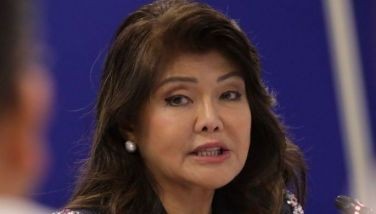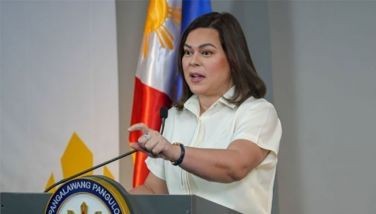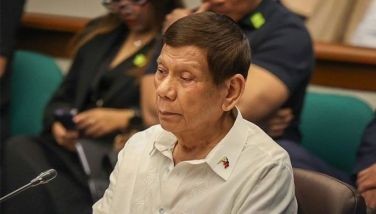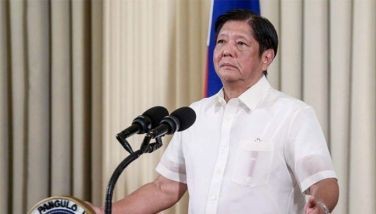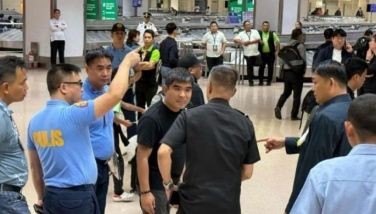The election of Duterte and ‘Heneral Luna’

In 2015, a year before Rodrigo Duterte was elected President of the Philippines, the movie “Heneral Luna” was showing to unprecedented box office crowds throughout the Philippines. It is a historical biopic of Gen. Antonio Luna’s leadership in the Philippine Revolution during the Philippine-American war.
On Sept. 29, 2015, it broke the previous record of P160 million to become the highest grossing Filipino historical film of all time.
Despite a 50 percent discount offered to student viewers, by the beginning of its fourth week the film was well on its way to reaching P200 million in gross ticket sales.
A number of visual motifs throughout film have symbolic significance, particularly for audiences familiar with the history of the period and Filipino culture.
A Philippine revolutionary flag is displayed prominently in the film’s bookend scenes, becoming dirtier and more ragged when the film reverts to its framing device as the events of the film unfold. The burning flag during the end credits is a poignant experience for Filipino audiences.
In a scene towards the end of the film, the bodies of Luna and his allies are dragged across the courtyard in a manner highly reminiscent of the Spoliarium, a painting which has served as artistic icon of Filipino nationalism, painted in 1884 by Luna’s own brother, Juan Luna.
Filipino ilustrados (the oligarchs then) Felipe Buencamino and Pedro Paterno argue for an American alliance with the Philippines as its protectorate. This angers the military leaders: Gen. Antonio Luna and Gen. José Alejandrino who wanted to continue the revolution for Philippine independence. Intramuros was the seat of government and power base of the Spaniards in the archipelago.
Then Prime Minister Mabini agreed with Heneral Luna, warning the Cabinet of the 7,000 additional American reinforcement arriving to fight any insurgencies. The generals wanted to strike, the commoners were with the generals willing to dare and die for their country.
Spain’s 333 years of Philippines colonization ended in 1898. The defeated Spaniards did not want to surrender to Filipinos. Instead they sold the Philippines for $20 million in the Treaty of Paris.
The Cabinet was too busy arguing.
Luna asked the Cabinet to authorize a pre-emptive strike against their self-proclaimed liberators and take control of Intramuros, then the seat of power, while the Americans forces had not yet landed their ground troops and the Philippine Revolutionary Army still had the advantage.
Filipinos, armed only with their bolos, were fighting for freedom in near impossible circumstances. Yet they did. Today, “Heneral Luna” the film shows the gory nature and treachery of that war. Its producer, Francisco Ortigas, said he financed the film because it is a time for national awakening.
It is about Filipinos who fought bravely to form a nation in the 19th century. That was not to be. Filipinos failed because they could not close ranks and instead of uniting against the enemy, they were fighting among themselves. The real enemy was not the Americans but ourselves. They could not agree on a strategy of war against the colonialists. Felipe Buencamino and the conservatives wanted to make peace with the Americans, but Antonio Luna and the radicals would not give up, saying they would fight even if it took a hundred years.
Had Luna’s proposal to take Manila before the US expeditionary force arrived been followed, the Americans would have had nothing to negotiate with the Spaniards in Paris. You can’t negotiate something you haven’t got. Had his idea to switch to guerrilla warfare been pursued, the Americans would have tired of the war in terms of lives and cost, just as they did against the Vietnamese 80 years later.
This may have been a collective and cultural experience of Filipinos more than a century ago. But it remained deep in the Filipino psyche.
I am a believer of the historical school of le longue duree. History is not only about prominent figures. It is also an unforgotten experience of a people.
The story of “Heneral Luna” reverberated when President Duterte consciously or unconsciously latched his campaign to Philippine independence and the role played by ilustrados in the Philippine-American war. With that as the theme of his campaign, he swayed unprecedented crowds in Philippine politics.
I watched the crowds clapped enthusiastically each time Duterte cursed the system and society we now have because the Americans left the oligarchs to govern and manage the country under the guise of freedom and democracy. He was an unknown figure and did not even have a political party behind him.
Rodrigo Roa Duterte, 71, served as the mayor of Davao City in Southern Mindanao for 27 years before rising to the Philippine presidency on May 9, 2016. He garnered 15.7 million votes representing 39 percent of the electorate in a five-cornered electoral contest.
His victory made Duterte the first mayor to become president. He won on the basis of several bold promises, foremost of which was to rid the Philippines of illegal drugs and crime in just six months. To his supporters, his record of cleaning up drugs and crime in Davao using a folksy, no-nonsense leadership could work for the country of 104 million people.
Apart from the anti-drug and corruption drive, Duterte promised to shift government to a federal system, re-balance Philippine development towards Mindanao and the poor, solve the traffic problem in Metro Manila and forge peace agreements with both communist and Muslim rebel groups. He also wanted a more independent foreign posture, distancing from the US and opening new doors of relations with China.
The rise of Duterte with a clear plurality vote has translated quickly into a public approval rating of 91 percent (Pulse Asia Survey covering 2-8 July 2016). This confirmed to Duterte he had the Filipinos’ mandate to undertake comprehensive and transformative change.
President Duterte’s audacity makes him the “Heneral Luna” of our time and the most controversial figure in the Philippines today and inarguably in the ASEAN region.
- Latest
- Trending

























